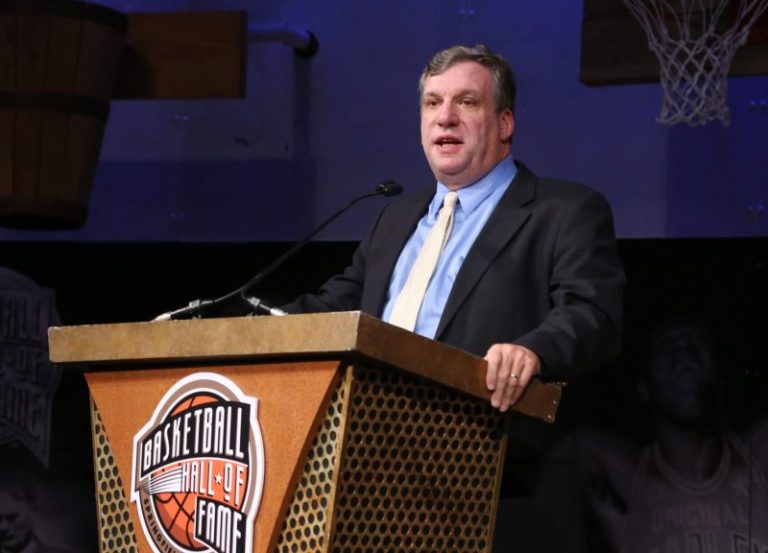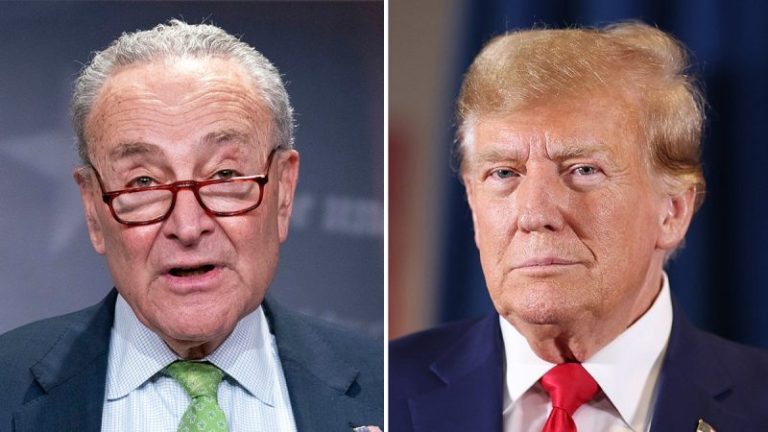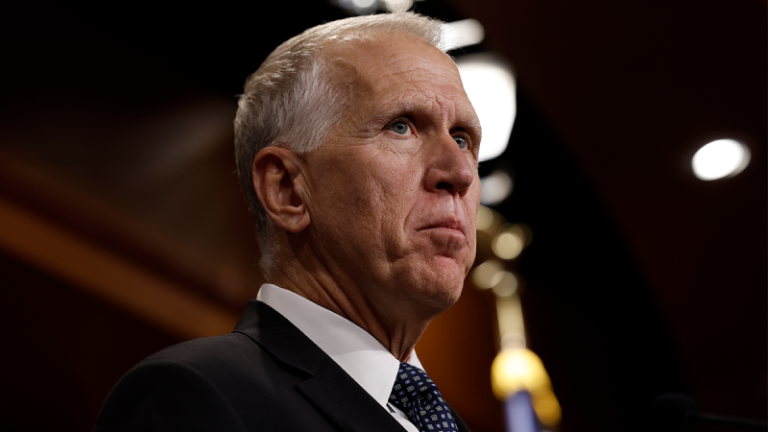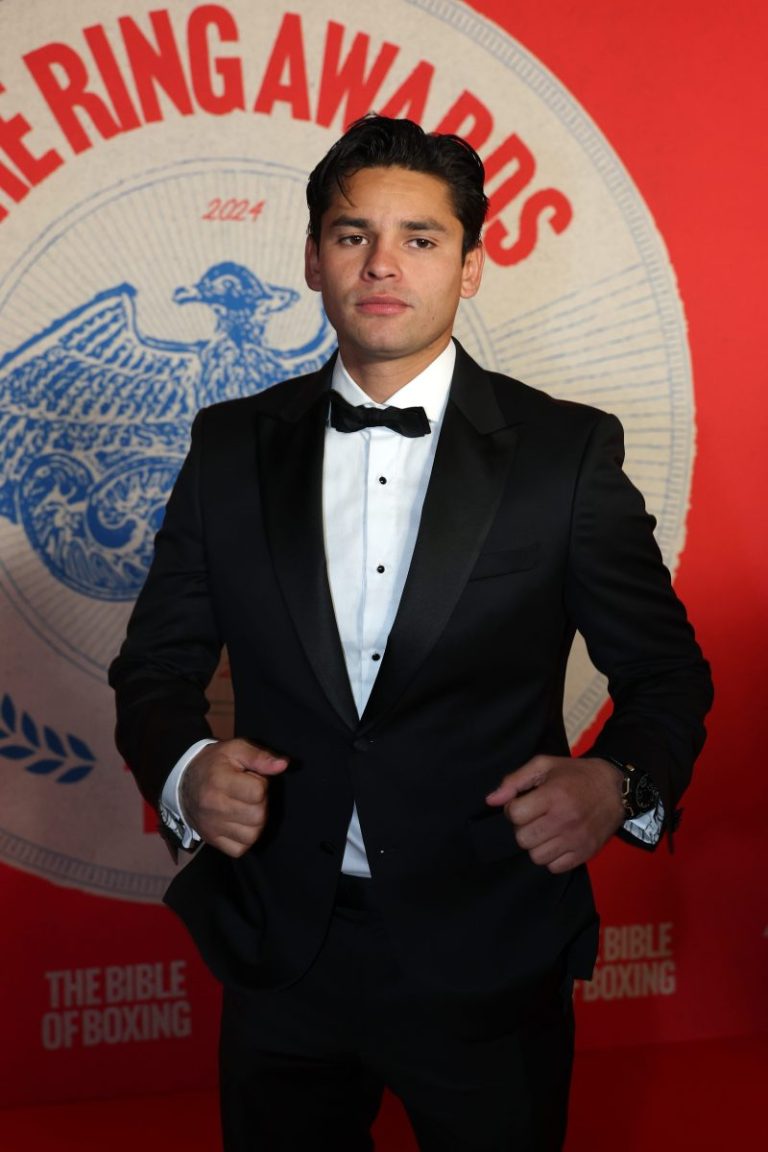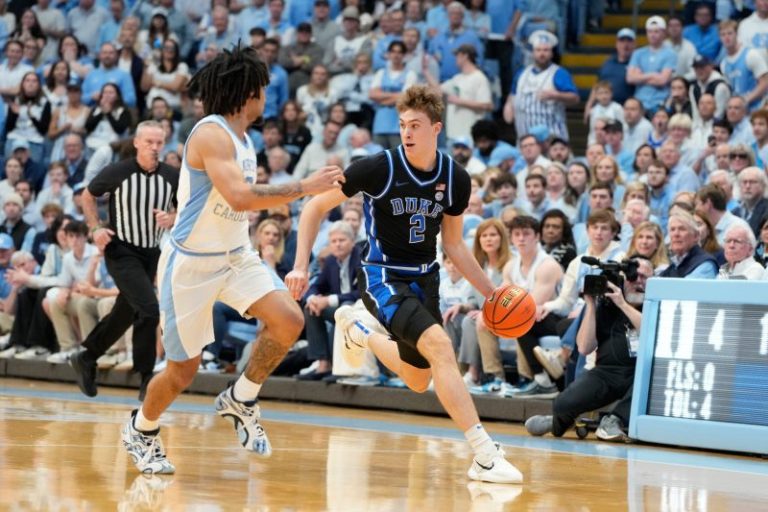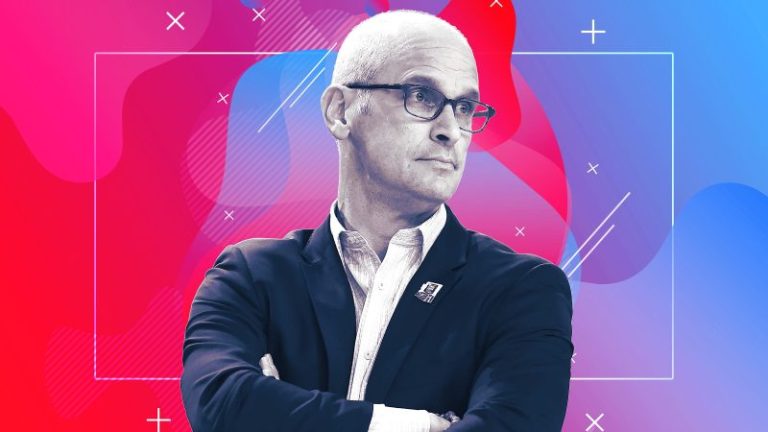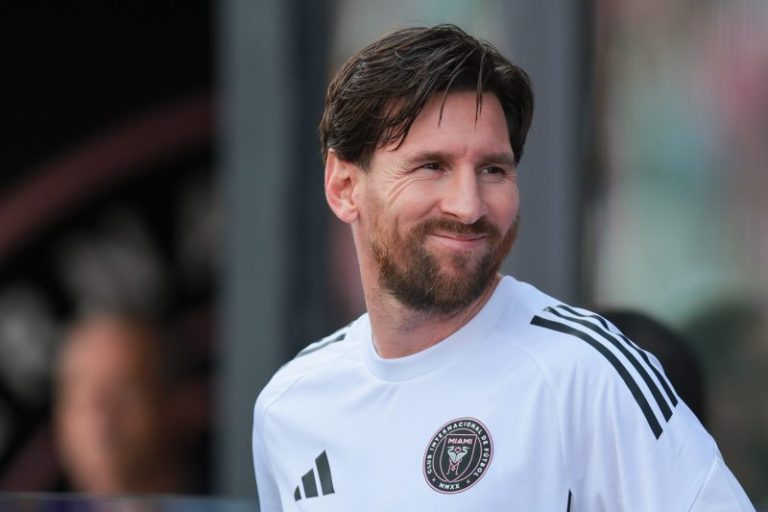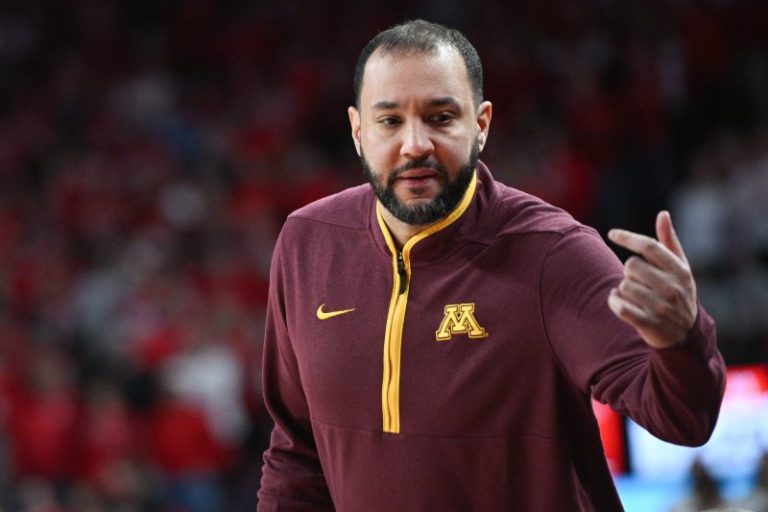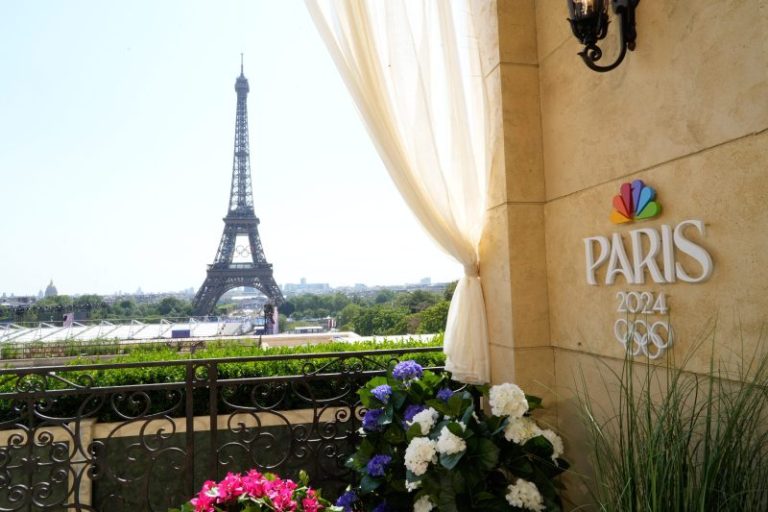Everyone had an opinion about what Dan Hurley should do last summer, as he agonized over an offer to leave his job as the University of Connecticut men’s basketball coach for the glitz and prestige of the NBA’s Los Angeles Lakers.
The state’s highest-ranking public official, Connecticut Governor Ned Lamont, was no exception.
‘Look, he’s the very best in the business. Everybody knows that,’ Lamont told reporters at the time.
He added that, if Hurley were to return: ‘We’ll make sure that he’s the top paid college coach.’
Hurley, 52, says he didn’t stay at UConn because of the money, but he stayed all the same. And though he’s not the highest-paid coach in the country, as Lamont indicated he would be, the six-year, $50 million contract that Hurley signed in July does put him near the top of the list. With a 2024 total pay figure of $7.78 million, he ranks third in USA TODAY Sports’ annual review of coaching compensation, behind only Bill Self of Kansas and John Calipari of Arkansas.
That sort of salary – about an $18 million increase from the scheduled total value in Hurley’s previous extension – is hardly unusual in college sports anymore, particularly for a coach as successful as Hurley, who has guided the Huskies to back-to-back national championships and helped cement their blue-blood reputation in men’s basketball. They are seeded third in the Big East tournament and will face Villanova on Thursday night.
Yet at UConn, where the athletics department has been heavily reliant upon university subsidies and lacks the safety net of a Power Four television deal, the money invested in Hurley carries a different weight.
Hurley’s contract, which is fully guaranteed, represents a big bet on men’s basketball at a time when the rest of college sports is prioritizing football, and athletics director David Benedict is also trying to prepare for the prospect of paying athletes as early as next year.
It’s also a sizable commitment to a coach at a university where academic departments are facing targeted budget cuts, financial uncertainty amid cuts to federal spending and an estimated $84 million deficit in 2026.
‘You pay for performance, and he performs. His teams perform,’ Lamont told USA TODAY Sports last month, when asked about UConn’s investment in Hurley.
‘I know what it means to the state. I know what it means to be in that arena and hearing the cheers, I know what it’s like for those victory parades down Main Street in Hartford, with tens of thousands of people. I know that we’re a small state, but it seems like every March they’re talking about Connecticut, thanks to UConn Huskies basketball.’
Lamont acknowledged that he was not directly involved in Hurley’s contract negotiations, beyond conveying to the coach how important he is to the people of the state. And UConn athletics said university money will not be used to cover his raise. According to athletics department spokesperson Bill Peterson, Hurley’s contract is being fully funded by contributions to the department’s ‘Dynasty Fund,’ though he did not specify how much money had been donated or promised to date.
‘This contract is recognition for the immense amount of effort that went into producing (two national titles),’ Benedict said in a statement last summer, ‘and the dedication it will require to sustain a program that expects to compete for conference and national championships in the future.’
The question, moving forward, is what that dedication to continued dominance in men’s basketball will look like. How will UConn pay for it? And what would happen if it all started to go south?
UConn’s outsized investment in hoops
Benedict, Maric and board of trustees chairman Daniel Toscano all declined to speak with USA TODAY Sports about Hurley’s contract and how it fits into the broader financial picture within the athletics department and university. Hurley also declined an interview request through a team spokesperson.
In media appearances last summer, however, he described the opportunity to coach the Lakers − including the NBA’s all-time leading scorer, LeBron James − as nothing short of ‘gut-wrenching.’ Hurley said he was torn between his desire to one day coach in the NBA and his current life at UConn, where his family was happy. Plus, the Huskies had just won another championship with a dominant NCAA Tournament run.
The contract he eventually signed at UConn had little to do with it.
‘One of the worst takes I’ve heard is that this was a leverage play by me to improve my situation at UConn,’ Hurley told ‘The Dan Le Batard Show with Stugotz’ in his first interview after turning down the Lakers. ‘I don’t need leverage here. We’ve won back-to-back national championships at this place.’
While Hurley’s new deal at UConn was about $20 million shy of the reported $70 million contract offered by the Lakers, it marked the second massive raise that he received in as many years − resulting in a total pay increase of 168% from 2022 to 2024. He also helped negotiate raises for his three assistant coaches, who are making a combined $405,000 more this season than they did a year ago.
The string of new deals further underlined the massive financial commitment that UConn already has made to men’s basketball. In its most recent financial report to the NCAA, UConn’s athletics department reported more than $105 million in revenue during the 2024 fiscal year and spent 9% of that amount on salaries and bonuses for men’s basketball coaches. Hurley alone pocketed an amount equal to 6.24% of the department’s total revenue.
Of the 104 public schools in the Football Bowl Subdivision that have released their most recent financial reports, the Huskies ranked 49th in operating revenue but fourth in men’s basketball expenses. And according to an analysis of the data in partnership with the Knight-Newhouse College Athletics Database at Syracuse University, they are the only school that spent more money on men’s basketball than football last year. (Ten schools, including Florida and Georgia Tech, have yet to provide their reports.)
Karen Weaver, a former college sports administrator and professor at the University of Pennsylvania, thinks UConn is taking a ‘calculated risk’ by funneling so much of its budget to men’s basketball. But with schools expected to share revenue with athletes next year, courtesy of a proposed class-action settlement with the NCAA, she thinks it’s a sensible investment for non-Power Four schools who might not be able to keep pace in football.
‘This is going to happen more, I think, with the House settlement,’ said Weaver, who hosts a podcast called ‘Trustees and Presidents: Managing Intercollegiate Athletics.’
‘Schools that are going all-in on basketball are going to go all-in on basketball, from coaching salaries to rev-share to general managers to playing national schedules.’
A complicated financial picture
Under the current terms of the House settlement, which could be finalized as early as next month, athletics departments will be able to directly pay athletes up to a certain cap, which is expected to be at least $20 million per school in 2025-26. But it’s unclear which schools will pay the maximum amount, and how the money will be allocated among different sports.
Texas Tech, which is one of the few schools to publicly announce its plan for revenue-sharing, said it will distribute roughly 74% of the allotted amount to football players, around 17% to men’s basketball players and the remaining 9% to everyone else. It’s a template that many other schools, particularly in the Power Four, are expected to follow given the outsized revenues that come with football success.
UConn, however, is in a different position. Its football team is not affiliated with a conference, does not drive a substantial portion of the department’s revenue and has posted a record of 36-87 over the past decade. Its men’s basketball program, meanwhile, has won three NCAA championships over the same time period − and, in the most recent fiscal year, generated about three times more money in donations than football and nearly four times as much in ticket sales, according to the school’s 2024 fiscal year report to the NCAA.
Peterson, the UConn athletics spokesperson, wrote in an email that the department’s revenue-sharing plan has not yet been finalized. But Benedict told Hearst Connecticut Media Group last summer that ‘we would never spend up to the cap’ of $20.5 million per year but would figure out a way to allocate whatever money they could spend to remain competitive across the board.
‘We’ll have to find a way, and I’m certainly a believer that we will,’ Benedict told the media outlet.
The prospect of paying athletes only further complicates what has, at times, been a dire financial picture for UConn.
Over the past decade, the Huskies’ athletics department has been severely reliant upon university subsidies to stay afloat, operating at a deficit that regularly exceeded $40 million − among the highest in the Football Bowl Subdivision. In 2017, the UConn Senate’s budgetary committee described the situation as ‘unsustainable’ and instructed the athletics department to look for cuts.
That proved more difficult after the school fired Hurley’s predecessor, Kevin Ollie, in 2018 − less than four years after he had guided the Huskies to a national title. The university initially attempted to fire Ollie for cause after he was charged with three NCAA violations, but he successfully challenged that decision in arbitration and received $11.1 million in back pay. He later received $3.9 million more in a subsequent case to settle discrimination claims.
There was also, of course, the COVID-19 pandemic, which cratered UConn’s self-generated revenue to a paltry $12 million in the 2021 fiscal year.
Fortunately for the Huskies, the past two years have shown evidence of a turnaround. While university subsidies still accounted for 40% of the athletics department’s budget in 2024, the Huskies touted upticks in ticket sales and donation figures. And the Big East’s new television deal, which begins next season and runs through 2030-31, is worth $80 million annually, according to Puck News. That’s nearly double the annual value of its previous deal.
‘We’ve had these conversations with the changing landscape of college sports − the revenue sharing that is coming down the road here, TV deals, and being able to take advantage and maximize our brand,’ Hurley told reporters last summer.
‘Our brand is at the pinnacle of college basketball and college sports, in terms of our basketball excellence here on both sides. How do we take advantage of that to the utmost so that we don’t fall behind?’
UConn facing academic budget cuts
Despite its recent progress, UConn remains stuck in a difficult financial position because of its inability to join a Power Four conference. Even with the Big East’s new deal, the Huskies will continue to make several times less than some of their Power Four peers in media and television revenue.
Jim Livengood, who spent nearly 25 years as a Division I athletics director at Washington State, Arizona and UNLV, said there are only so many other avenues that athletics directors at schools like UConn can pursue to bring in more money. There are only so many ways that they can raise ticket sales, he said, or nudge well-heeled donors.
“That’s what nobody has the answer to: When does that (donor money) tap out?’ Livengood explained. ‘I’m hearing that a little bit more right now, in the last month or so, that a number of donors are saying, ‘You know, I can do this, but I can’t do it forever.’ ‘
In the months before and after finalizing Hurley’s contract, UConn also handed new deals to Auriemma and Mora. And as it begins to share revenues with athletes in the coming years, the athletics department also must reduce the subsidy it receives from the university by 15% over a five-year period, university spokesperson Stephanie Reitz confirmed.
That 15% reduction − which would amount to a roughly $4.54 million cut to the athletics department’s institutional support by 2029 − is part of an equitable budget cut across all departments at UConn, which is dealing with its own significant financial issues.
Over the past few years, the university has benefited from tens of millions of dollars in short-term funding courtesy of the American Rescue Plan Act. Now, it is also grappling with the prospect of a reduction in grants and other funding from the federal government due to policy changes being floated by President Donald Trump and his Department of Government Efficiency.
Michael Bailey, who is executive director of UConn’s chapter of the American Association of University Professors, views the university’s budgetary issues as largely separate from what the athletics department is doing − including Hurley’s new contract.
When asked about his initial reaction to the $50 million deal, Bailey said he thought: ‘They better find some donors to kick in the money.’
‘There is more pressure on university budgets than I’ve ever seen, when you add up the federal government craziness plus our particular local circumstances here in Connecticut with a shortfall even despite a state budget surplus,’ added Christopher Vials, the president of the university’s AAUP chapter.
‘If there has been a financial boon from the recent NCAA victories, we haven’t felt anything from that on the academic side. We’ve seen, in fact: Cut, cut, cut, cut, cut.’
Jason Rojas, the Majority Leader in the Connecticut House of Representatives, said he has long grappled with questions about academic and athletics spending at public universities. As a diehard UConn basketball fan, he loves Hurley and thinks he brings a ton of value and recognition to the state. But through his work outside the state legislature, as an administrator at Trinity College in Hartford, he also sees firsthand all of the other ways that money could be used to support the academic side of the school. He thinks they have to all be considered as coming from the same financial pot.
‘How is it that you balance compensating an athletics coach … with the need to provide mental health services to students? To pay faculty appropriate salaries? To provide other co-curricular experiences that are not athletics?’ he said. ‘It’s hard, right? It’s a difficult trade-off.’
A big-money guarantee
UConn athletics has touted an economic impact study that found the department generated $242.7 million in total economic output for the state in 2024. And, as far as Lamont is concerned, Hurley’s contract will essentially pay for itself.
‘Look, I come out of the business world. And in business, you pay for performance − because performance pays for itself,’ Lamont said. ‘So I’ve got no problem (with paying coaches). If that sociology professor generated tens of millions in grants and was breaking turf and everybody’s talking about him, he should be compensated as well.’
The question, though, is what would happen if that performance were to dip as UConn’s investment in men’s basketball stayed the same?
It’s too early to consider that possibility, though the Huskies’ current season hasn’t matched the dominance of its previous two. While they are shoo-ins to return to the NCAA Tournament, they are not favored to three-peat after an up-and-down season which has them sitting at 22-9.
On a national level, UConn’s season has probably gotten more attention for Hurley’s outbursts on the sidelines − including a televised exchange with an official in which he yelled ‘don’t turn your back on me, I’m the best coach in the (expletive) sport!’ − than it has for its results on the court. (‘I’m embarrassed that I said that,’ the coach later told Hearst Connecticut Media Group. ‘It makes me feel like a real ass.’)
Regardless of how the rest of Hurley’s tenure unfolds, his salary will be fully guaranteed, rising to $8.85 million in the final year of the deal. If UConn were to fire him without cause, it would owe him every cent left on the deal; As of April 1, that would translate to roughly $43 million − the largest buyout in USA TODAY Sports’ survey by a $10 million margin.
‘Nobody ever talks during the process of hiring (about) what if it doesn’t work? Because we don’t want to be negative,’ Livengood said. ‘But at the end of the day, that should be part of the thinking process. … Where is that money in case it does go south? Because to my knowledge, any university that I know of and have been a part of, there’s no pot of gold hidden in a basement somewhere or locked in a closet that nobody knows about.’
The Huskies, of course, will hope that part of Hurley’s monstrous contract remains a mere hypothetical.
Hurley is largely beloved in Connecticut, where Lamont unveiled highway signs last fall proclaiming the state as ‘the Basketball Capital of the World.’ In a state that only has one major professional sports team, the WNBA’s Connecticut Sun, it’s clear that Hurley and his team take on a uniquely meaningful role.
‘He’s a champion,’ Lamont said, ‘and he makes people in Connecticut feel like champions.’
Follow the reporters on social media @tomschad.bsky.social and @ByBerkowitz.
This post appeared first on USA TODAY

